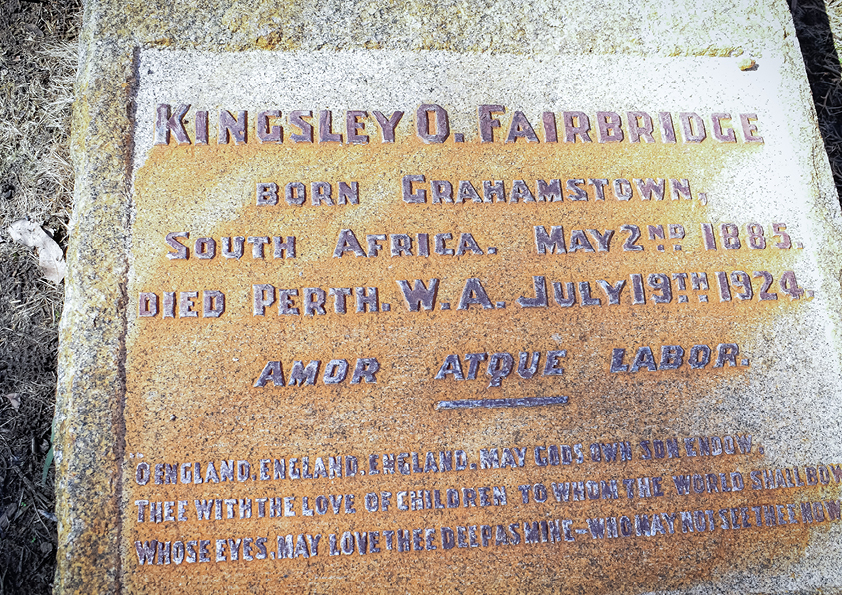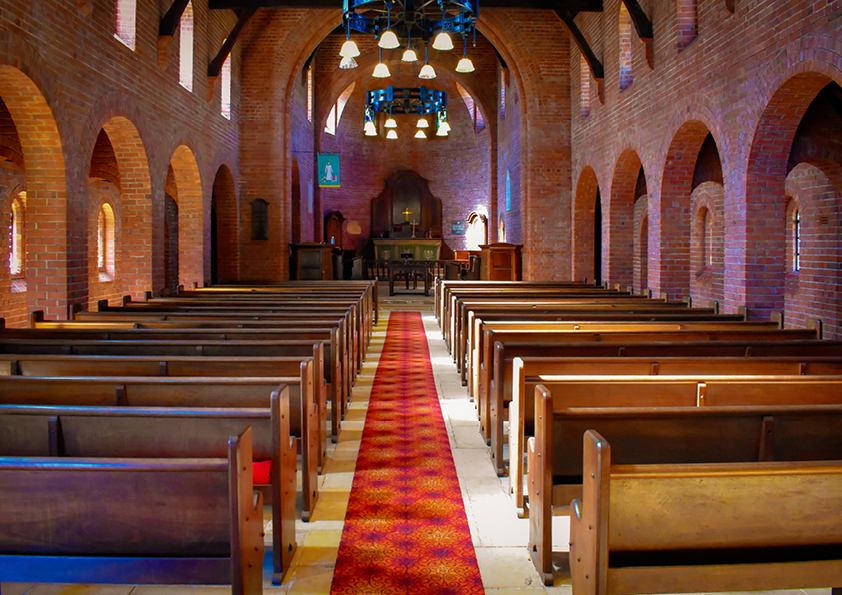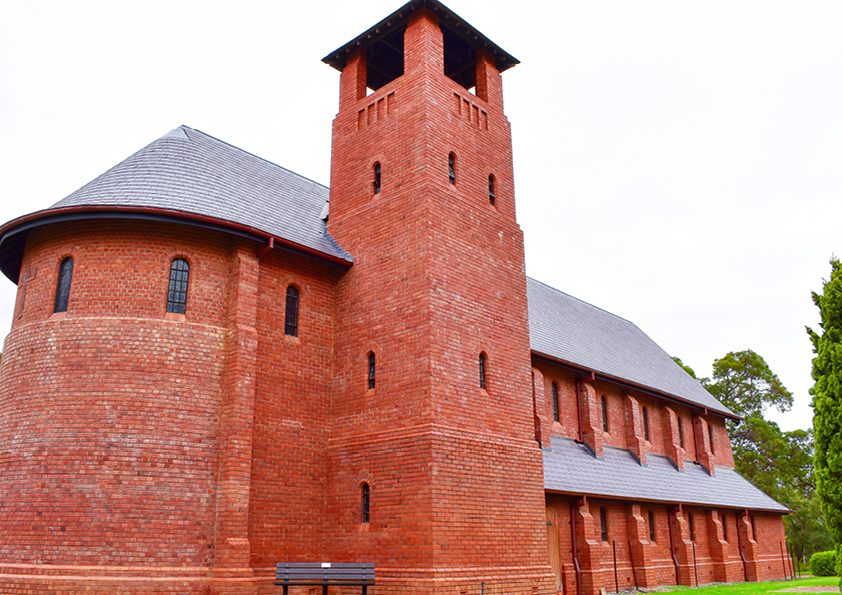In 1912, Kingsley and Ruby Fairbridge set sail from England to Western Australia, where their dream took root, establishing the world’s first Fairbridge Farm School in 1912, aiming to give underprivileged kids a brighter future.

Kingsley Fairbridge’s passion began at 12, solidifying in 1903 during a visit to England. He saw struggling children and wanted to make a difference. In 1909, his vision turned real as Fairbridge Farm Schools opened in Pinjarra, offering children a chance to thrive.
From 1913 to 1982, Fairbridge helped 3,580 children, where they learned skills, from farming to crafts, and gained a fresh start. The school’s unique cottage system fostered strong connections.

More than 100 years on, his legacy endures. The Village remains in Western Australia, a living memory of his dream. Fairbridge Western Australia Inc. continues his work, providing programs in line with his vision including camps, education and family-centred accommodation. Today, his spirit lives on as the seeds he sowed a century ago continue to blossom.
Kingsley Fairbridge was born in Grahamstown, South Africa
1909
Formation of the Child Emigration Society, Oxford, England
1912
Kingsley and Ruby Fairbridge arrive in Pinjarra and start the first Fairbridge Farm School on 160 acres located south of Pinjarra
1913
January, the first 13 boys arrive at Fairbridge Farm School
July, the second party of 22 boys arrives
1914
First Mandurah summer camp
1914
to 1918 The First World War. British child migration deferred
1919
Kingsley & Ruby Fairbridge and family return to England on a promotional trip
1920
3,100 acres were bought from the Estate of Wm Paterson for a new farm site on the South Dandalup River
1921
First five cottages completed: Belfast, Clive, Shakespeare, Wolfe, and Warren Hastings
1921
British child migration recommenced
1921
The first party to include girls arrive
1921
Office/Gatehouse Exeter constructed (later Assistant Principal’s residence)
1921
The kitchen and store are completed
1922
Headmaster’s house, later known as Fairbridge House completed – a pise structure (rammed earth)
1923
Eight more cottages completed –
Glasgow, Jenner, Henry Hudson, Raleigh, Darwin, Lister, Nelson and Isaac Newton
1924
Kingsley Fairbridge dies – at midnight Saturday 19 July
1927
Seven more cottages were built –
Cook, Rhodes, Livingstone, Kitchener, Lawley, Haig, and Forrest
1927
Duke and Duchess of York visit Fairbridge (the Duke later became King George VI)
1928
Principal’s residence (Heath House) and Dairyman’s house (Oxford) constructed
1928
Manual Training Workshop constructed
1928
Two more classrooms constructed
1930
Generous gift received from the late Mr. Thomas Wall to build a Chapel
1930
Hospital constructed – Nightingale
1931
Church of the Holy Innocents was officially dedicated by the Bishop of Bunbury
1931
Chief Scout (Lord Baden-Powell), Chief Guide (Lady Baden-Powell), and Governor (Sir William Campion) visit
1932
Middlemore cottage completed
1933
Old Fairbridgians Clubhouse completed
1933
A cement block garage and other technical buildings built
1934
Weir constructed across the river to provide a safe swimming pool
1934
Duke of Gloucester visits Fairbridge
1934
Office building constructed
1935
Arthur Scratton Memorial residential building with clock tower completed for senior boys
1935
Domestic Science building constructed
1935
Saumarez and Evelyn cottages constructed for senior girls
1938
Laundry, Power House, Staff Dining room, kitchen, and quarters constructed
1938
Fairbridge, Molong, New South Wales was opened
1939
to 1945 – World War 2. British child migration deferred
1939
to 1945 – Many Old Fairbridgians join the services – Army, Air Force, Navy Home Forces, Women’s Land Army
1942
Guildford Grammar School boys in residence
The site used to train young women as farm hands – Women’s Land Army
1945
Dutch refugee children were housed until reunited with their families in 1946
1948
Renovations to site buildings begin
1949
Child migration recommenced. First migrant children arrive after the war
1950
School buildings renovated
1954
Renovations to 18 cottages completed
1956
Fairbridge Society decides to take children with one parent, and families with many children
Big Brother Movement began to utilise Fairbridge
1961
Plans for new swimming pool, oval and sports pavilion completed
1963
Memorial Colonnade constructed at the entrance to the village
1964
Cottages full
1964
Queen Mother visits Fairbridge
1966
Noah’s Ark pavilion erected
1971
Warren Hastings destroyed by fire
1974
Fairbridge, Molong, N.S.W closed
Prince Charles visits Fairbridge Pinjarra
1981
Kingsley Fairbridge Farm School Pinjarra was closed
1983
WA Board of Fairbridge Society London becomes incorporated in its own right as Fairbridge Western Australia Inc
1983
Alcoa buys the site from Fairbridge Society London
1983
Alcoa sells the buildings and infrastructure back to Fairbridge WA Inc for $1 and enters into a 94-year peppercorn lease for the site the buildings are constructed on
1983
Alcoa erects a memorial over Kingsley Fairbridge’s grave
1984
Freemasons agree to underwrite the Board of Fairbridge Western Australia Inc
First Old Fairbridgians Memorial Wall constructed
Fairbridge Farm School entered the Heritage Council of WA Register of Heritage Places
Elizabeth cottage was officially opened by descendants of Kingsley & Ruby Fairbridge
Rosa Nobes boy’s replica cottage opened by John Lane




Fairbridge Chapel was designed by architect Sir Herbert Baker in 1928 and completed in 1931. The chapel resembles earlier architectural styles Baker had developed in South Africa, fitting with Kingsley’s origins. The building was largely the gift of Thomas Wall of English Ice Cream fame, who donated £6,000. Construction was carried out by builders, Sumpton and Sons, along with unemployed Fairbridgians’ who helped dig the foundations.
The first foundation stone for the chapel was laid on 14th February 1931 by A E Joyner. Dedication followed 10 months later on the 12th December 1931, by the Bishop of Bunbury. The Chapel is 56 feet long and 25 feet wide and was built using local materials including brick, jarrah, and karri and a shingled roof. The most prominent features of the chapel are its high ceilings, glass stain windows, and dramatic chandeliers. The glass stain window at the western end of the chapel was placed by the Old Fairbridgian’s Association in memory of its founder.
Kingsley’s grave lies a short distance from the chapel, with views of the rolling hills that lay backdrop to the church. A Pipe Organ was donated by a London hotel and shipped over to Western Australia. The organ can still be heard playing in the chapel today. The chapel roof has been restored thanks to the team at Fairbridge and funding from the Heritage Council of WA, and Alcoa of Australia.
The Fairbridge chapel is open to the public 7 days a week from 9.00 am to 5.00 pm. The chapel is available free of charge for school and community groups.
Fairbridge Western Australia Incorporated Fairbridge Village South West Highway P.O. Box 173 Pinjarra WA 6208

Action packed adventure camps throughout WA. A heritage listed holiday destination. Innovative education programs. There is plenty to experience at Fairbridge.
Fairbridge WA Inc. acknowledges and respects Aboriginal and Torres Strait Islanders as the traditional owners of this land. We pay our respects to Elders past, present and emerging.